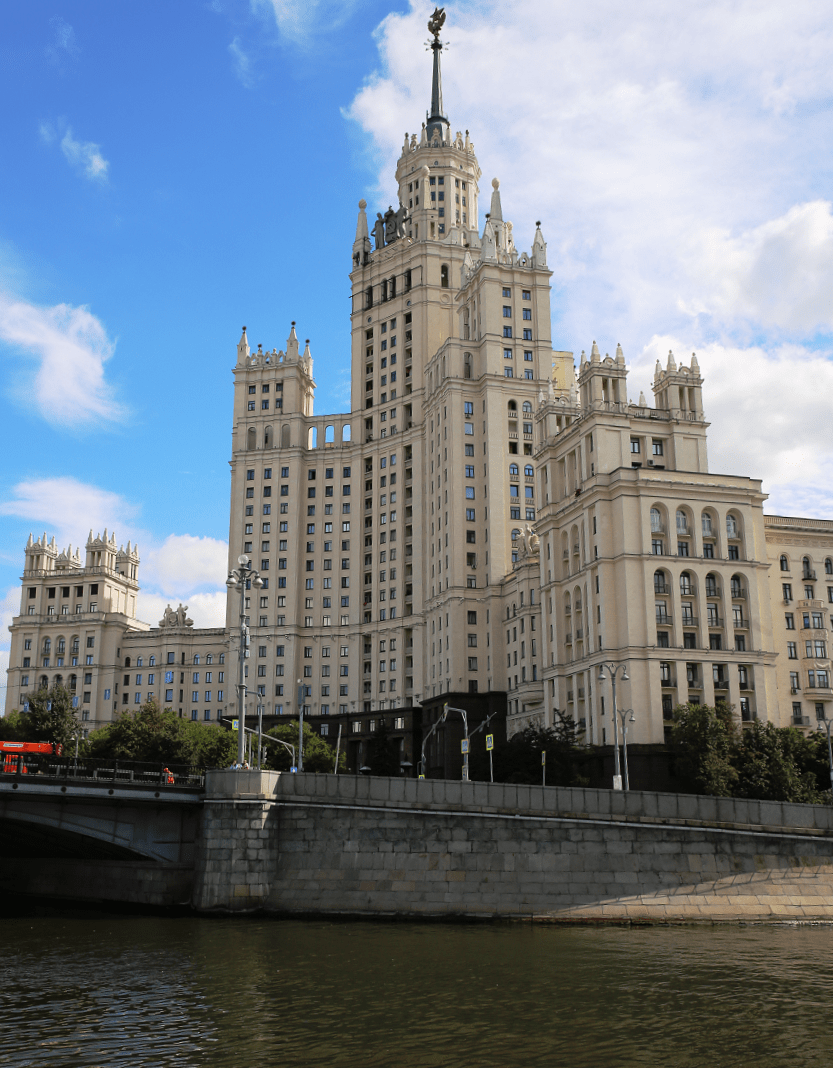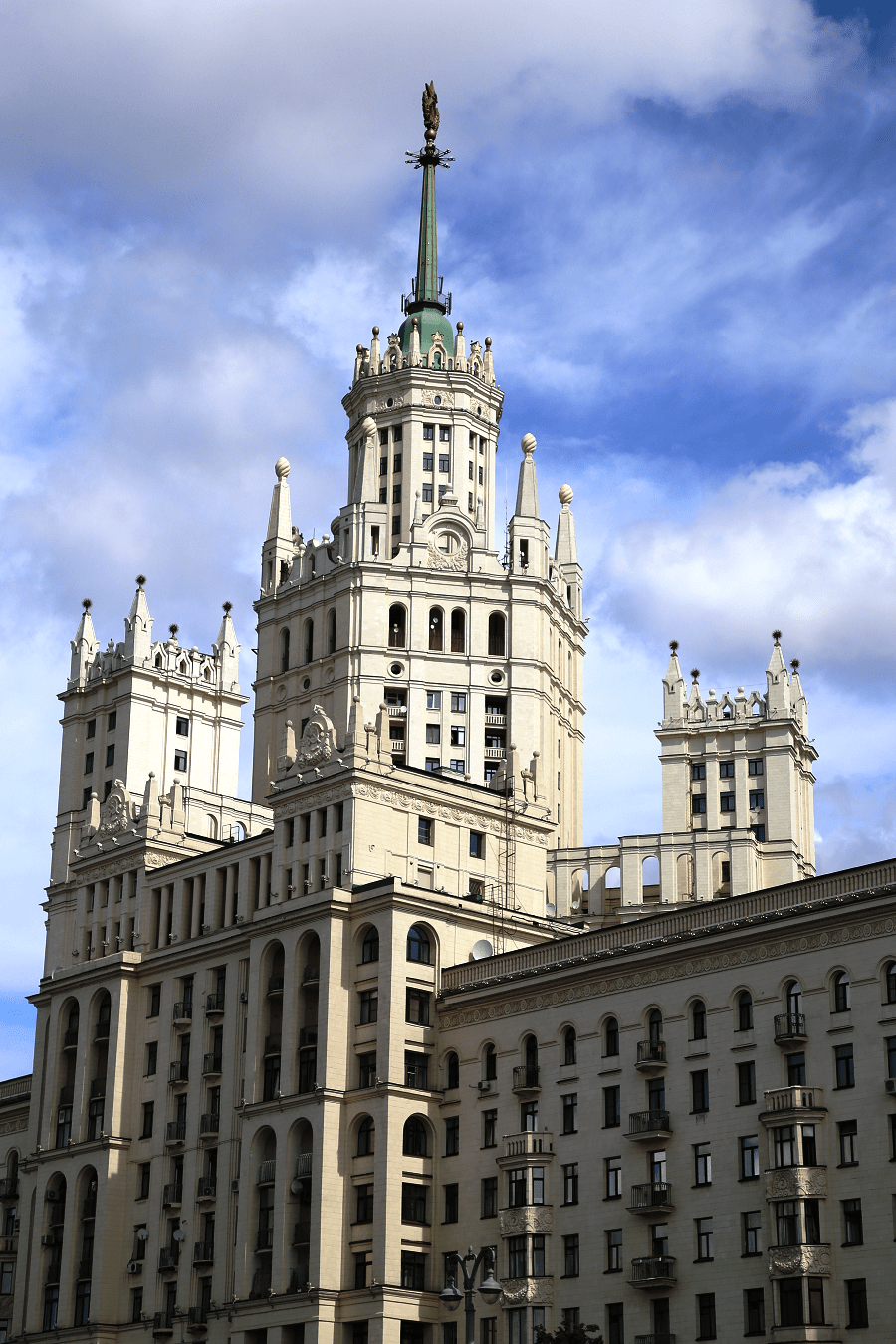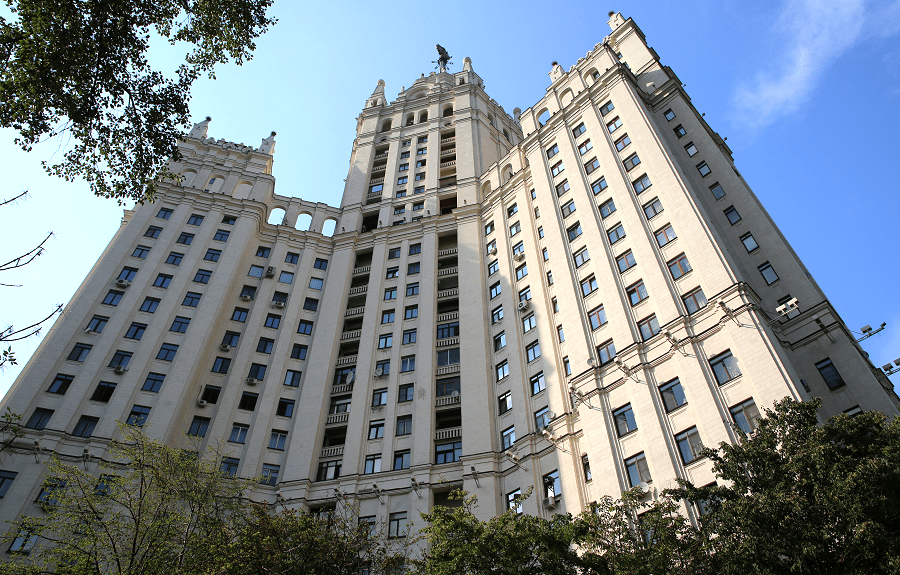The residential building on Kotelnicheskaya Embankment is one of the seven completed Stalinist skyscrapers in Moscow. The building is located near the confluence of the Yauza with the Moscow River in such a way that two side buildings stand along the Kotelnicheskaya and Podgorskaya embankments. The skyscraper was built as a “city within a city” in 1938-1940 and 1948-1952. The authors of the project are architects Dmitry Chechulin and Andrey Rostkovsky, and the chief engineer is L. M. Gokhman.
The central high-rise building has 32 floors, its height together with the spire is 176 m, the number of storeys of the side buildings is from 8 to 10. Initially, the building had 540 apartments.
The first residents began to move into new buildings in 1953. Although the building and its architects were criticized in Khrushchev’s time, the state allocated apartments to well-known figures of art and science, which emphasized the high-rise’s elite status. At different times, actresses Faina Ranevskaya, Clara Luchko, Nonna Mordyukova, actors Mikhail Zharov and Alexander Shirvindt, singer Lyudmila Zykina, ballerina Galina Ulanova, poets Alexander Tvardovsky, Andrey Voznesensky, Evgeny Yevtushenko, Robert Rozhdestvensky, writers Vasily Aksyonov and Konstantin Paustovsky lived in the house.
Although Chechulin fell into disgrace after Stalin’s death, he also received the keys to an apartment in a house he had designed. However, the apartment was on the first floor, that is, it was not the most prestigious.
Architecture
The skyscraper, G-shaped in plan, consists of three buildings: the central one, which has 32 floors, and two side buildings 8-10 floors high. A feature of the central building is the layout in the form of a three-beam star, one ray of which is directed towards the courtyard. The coat of arms crowning the spire of the building is located at a height of 176 m.
The design is typical of the Stalinist Empire style. A square with flower beds and fountains was created on the territory adjacent to the house. The lower five floors are faced with pink granite, the rest of the building with ceramic blocks. The skyscraper is decorated with sculptural groups.
In the decoration of residential premises and lobbies, marble, precious woods, and non-ferrous metals were used. In the central building, 10 elevators were installed. The high-rise hall is decorated with bas-reliefs and ceiling paintings depicting happy Soviet citizens.
A unique level of service for the Soviet era was created in the residential building. Directly in the building, there were bureaus of orders and consumer services for residents, as well as four shops. In the central building there was a storage room for strollers and bicycles. Under the courtyard there is underground parking for 212 cars.
Since the mid-1950s, a cinema has been operating in the building, originally bearing the name Znamya. In 1966, it was renamed Illusion, and at the same time it was adapted to show films from the State Film Fund. The high-rise was inhabited by NKVD officers, the party elite and many Soviet artists. The repertoire of the cinema included festival foreign films, which, in fact, escaped censorship.
Initially, there were 540 apartments in the house, of which 344 were in the high-rise volume, including 7 one-room and 13 four-room apartments. By analogy with tenement houses of the tsarist time, in the Stalinist high-rise there were exits from the apartments to the “back” stairs.
As in other high-rise buildings, advanced engineering networks were implemented in the house. Both conventional ventilation and a centralized air conditioning system functioned in the house. Air from the street entered the apartments all year round, passed through special filters, heated or cooled to the desired temperature. A centralized dust removal system was built into the walls: dust was collected using hoses and fell into filter stations, from where it was discharged into the sewer, and the purified air entered the street. Boilers were installed for heating in the basement.
Nearest metro: Taganskaya, Kitay-Gorod.
Attractions nearby: Novospassky Monastery, Novospassky Bridge, Krasnokholmskaya Embankment, Shlyuzovoy Bridge, Kosmodamianskaya embankment, Bolshoy Krasnokholmsky Bridge, Kotelnicheskaya embankment, Goncharnaya embankment, Krigskomissariat.
See also Architecture of Moscow, Palaces and most historic buildings of Moscow.



















